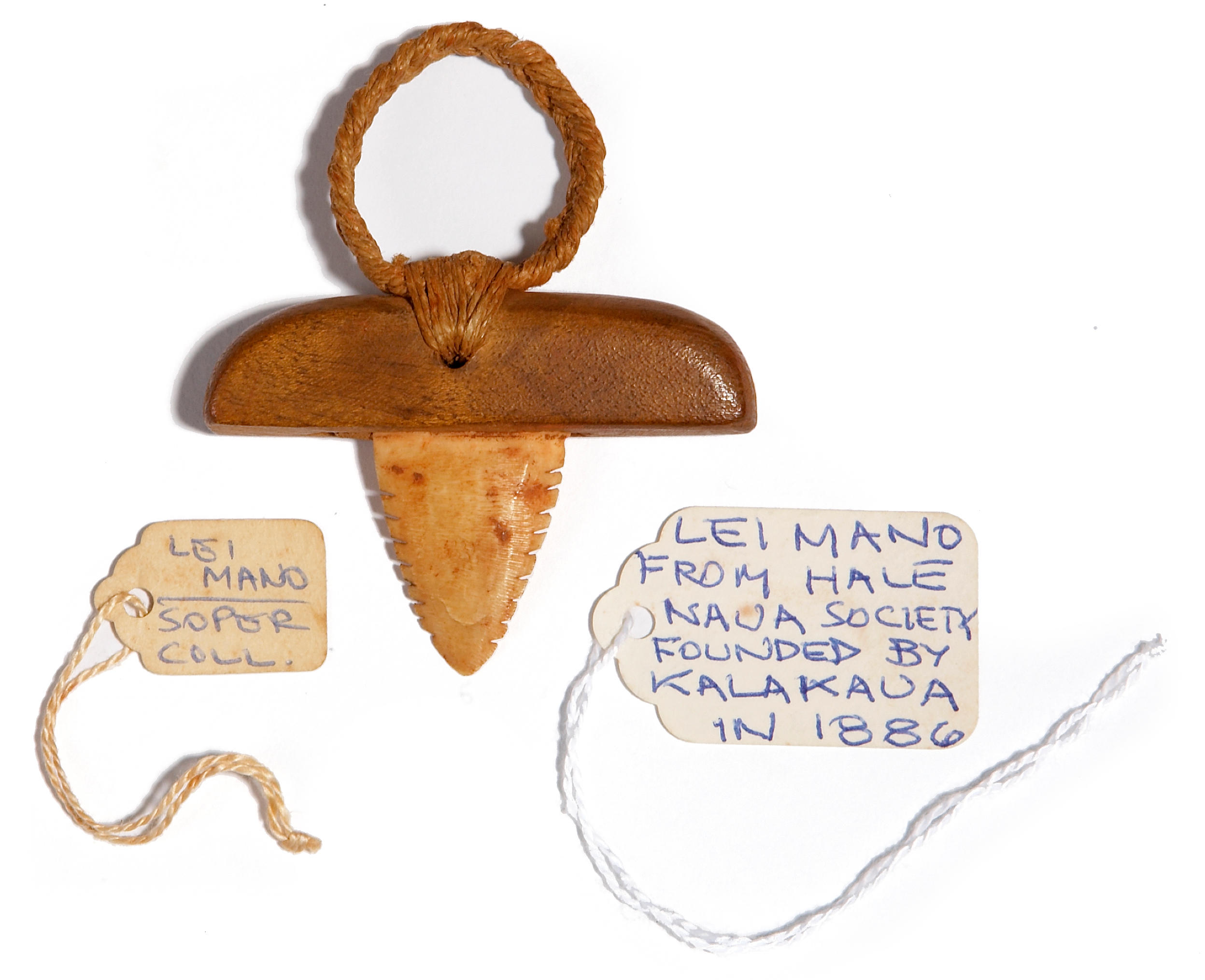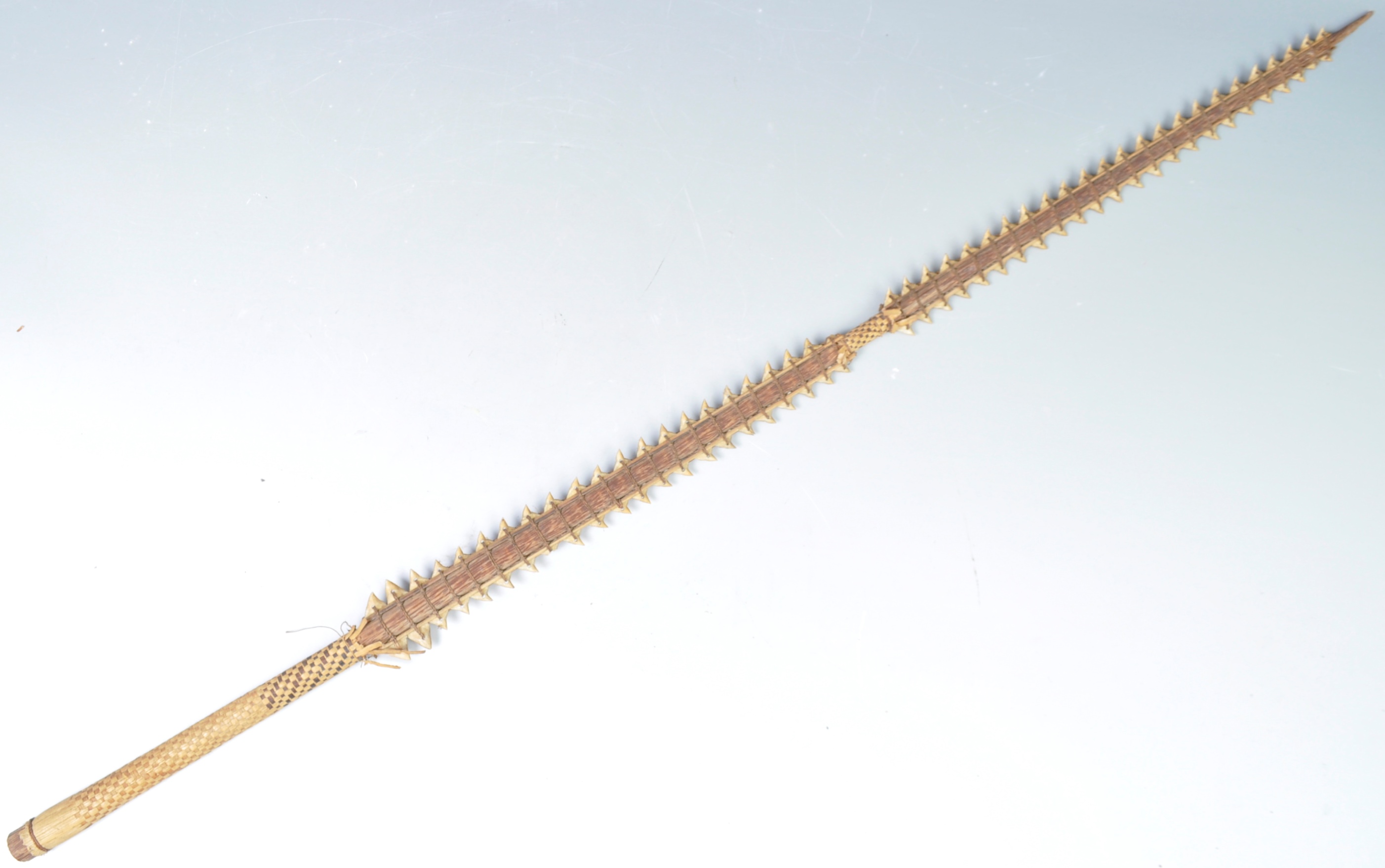length 4 1/2in the single tooth lashed to the hard wood handle by fibrous cordage. Fragment of original suspension cordage surviving in distal handle’s L-shaped hole. According to Buck (p. 448), this example is classified as an “obtuse-angled shaft”. He goes on to describe the type: “A neat type of implement has a handle with two limbs meeting at an obtuse angle and sometimes more nearly at a right angle… The type was first figured by Cook (1784, Atlas, pl. 67, no.2) and, speaking of Hawaiians, he says (1784, vol. 2, p. 239): “They have also little instruments made of a single shark’s tooth, some of which are fixed to the fore part of a dog’s jaw bone, and also to a thin wooden handle of the same shape; and at the other end there is a piece of string fastened through a small perforation …” References: Buck (1957:446-49, Figure 287(g))
length 4 1/2in the single tooth lashed to the hard wood handle by fibrous cordage. Fragment of original suspension cordage surviving in distal handle’s L-shaped hole. According to Buck (p. 448), this example is classified as an “obtuse-angled shaft”. He goes on to describe the type: “A neat type of implement has a handle with two limbs meeting at an obtuse angle and sometimes more nearly at a right angle… The type was first figured by Cook (1784, Atlas, pl. 67, no.2) and, speaking of Hawaiians, he says (1784, vol. 2, p. 239): “They have also little instruments made of a single shark’s tooth, some of which are fixed to the fore part of a dog’s jaw bone, and also to a thin wooden handle of the same shape; and at the other end there is a piece of string fastened through a small perforation …” References: Buck (1957:446-49, Figure 287(g))















Testen Sie LotSearch und seine Premium-Features 7 Tage - ohne Kosten!
Lassen Sie sich automatisch über neue Objekte in kommenden Auktionen benachrichtigen.
Suchauftrag anlegen